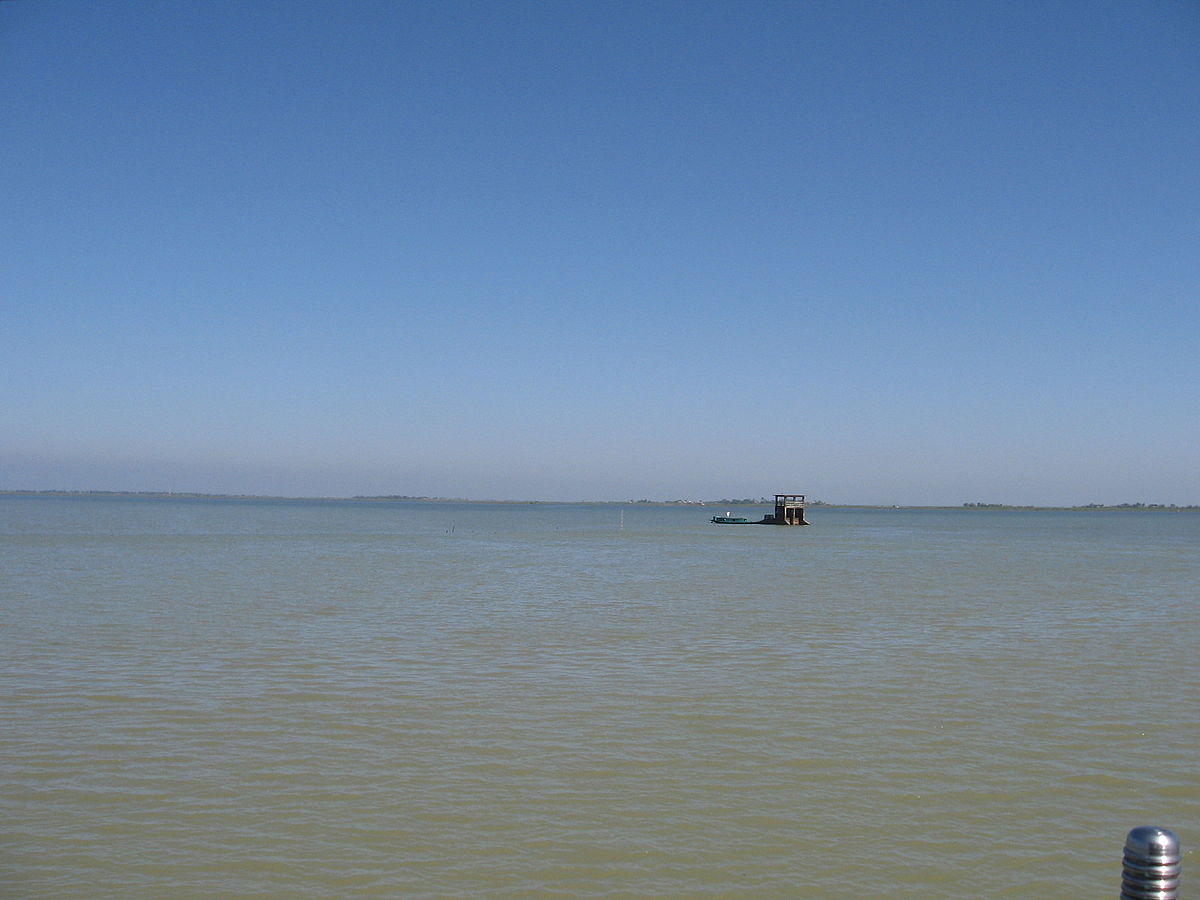Surma River

Image Source: Wikimedia commons
Surma River rises as the barak on the southern slopes of the Naga-Manipur watershed. The Barak splits into two branches within Cachhar district of Assam in India. Surma, the northern branch, flows west and then southwest to Sylhet town. Beyond sylhet, it flows northwest and west to Sunamganj town; from there to southwest and then south to Madna, where it meets the kushiyara, the other branch of the Barak. It receives several rivers and streams flowing south from Meghalaya Plateau. From east to west they are the Lubha, Hari (Kushia), Goyain Gang (Chengar Khal), piyain, Bogapani, Jadukata, Shomeshwari and kangsa.
The Surma is flood-prone in the monsoon. The flood season is generally from the last week of May to the middle of October, the mean discharge in this period being about 30,000 cusec. Between 1950 and 1958 the maximum and minimum discharge recorded were 53,008 cusec (15 August 1958) and 487 cusec (21 March 1954) respectively. The Surma is bifurcated in the south of mohanganj, and soon after it receives the Kangsa and further to the south the Mogra., The western channel is known as the Dhanu in its upper course, the Baulai in the middle and the Ghorautra lower down. It joins the meghna near kuliarchar. The southern branch of the Barak, as the Kushiyara, receives the Manu on the north of Maulvi Bazar town and is bifurcated into a northern channel, the Bibiyana, and a southern one, which resumes the name of the original river, the Barak. The Bibiyana changes its name to Kalni, lower down its course and joins the Surma near ajmiriganj. The Barak (western) receives the Gopla and the khowai from the Tripura hills, and falls into the Surma at Madna.
The way these rivers change their names is indeed confusing. To make matters worse, it seems that there is no general agreement as to identify a river course by a single name, rather the entire course of the river may bear different names along its path. The Surma from Ajmiriganj downstream is often referred to as the Meghna. The matter would be simple but for the fact that from Madna downstream for about 26 km (in a straight line) one of the two channels of the Surma-Meghna is known as the dhaleshwari. Northern Dhaleshwari has the behaviour of changing courses. The change takes place south of Austagram, where both channels meet and come to be known as the Dhaleshwari. To avoid confusion the main channel from Ajmiriganj down to the confluence of the Dhanu-Ghorautra is referred to as the Surma. This confluence is 5 km east of Kuliarchar. Downstream from there, the river is referred to as Meghna. Most of the Surma system falls into the Haor Basin, where the line of drainage is not clear and well defined. In the Piedmont tract from durgapur to jaintiapur, the network of streams and channels overflows in the rainy season and creates vast sheets of water which connect the haors with the rivers. In the haor basin too, the rivers overflow and inundate the haors in the early part of the rainy season and get back much of the water as soon as the monsoon rains slacken.
Hi! I am a robot. I just upvoted you! I found similar content that readers might be interested in:
http://en.banglapedia.org/index.php?title=Surma_River
Asif you should not direct copy any things from any english website